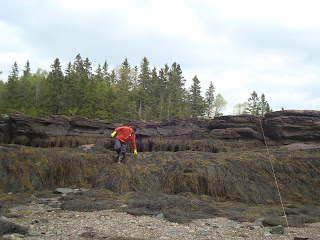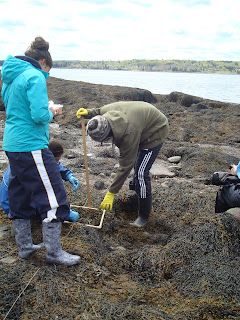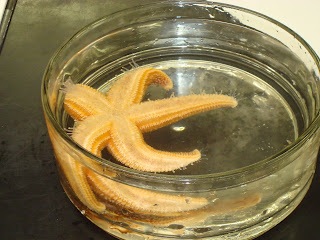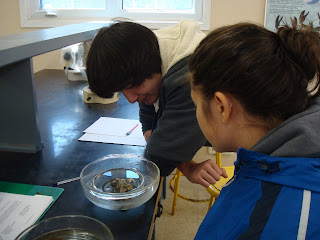This morning students again were in the lab to look at the behaviour of different types of invertebrates. They began by looking at how quickly echinoderms will right themselves once flipped over. Next the students split into two groups; one group testing light response in Green, Rock and Hermit crabs, while the other group studied how different temperatures affect the feeding rate of barnacles. This afternoon the students from MacDonald High School will be marking the invasive species; the Green Crab, at Pottery Creek. This is to help identify any population changes that occur with time.
Students use two meter sticks and a transect line to measure the changes in elevation of the beach.
The students used an Ipad to help document some of their data.
The live animals that were found within the quadrate were some of the data recorded.

It helped to have sure footing when climbing up and down on the seaweed.
This student is watching closely to determine how the sea star will flip itself.
This Green Sea Urchin, although small, was very slow to turn itself Right Side up.
The sea star starts by inverting its arms in order to flip itself.
These students are carefully observing the barnacles to make an accurate count of their feeding rate.
This group is testing the response of a Rock crab to light.
This experiment involved putting the crab in a dark pan and controlling where the light was placed so the crabs movements could be recorded.









No comments:
Post a Comment